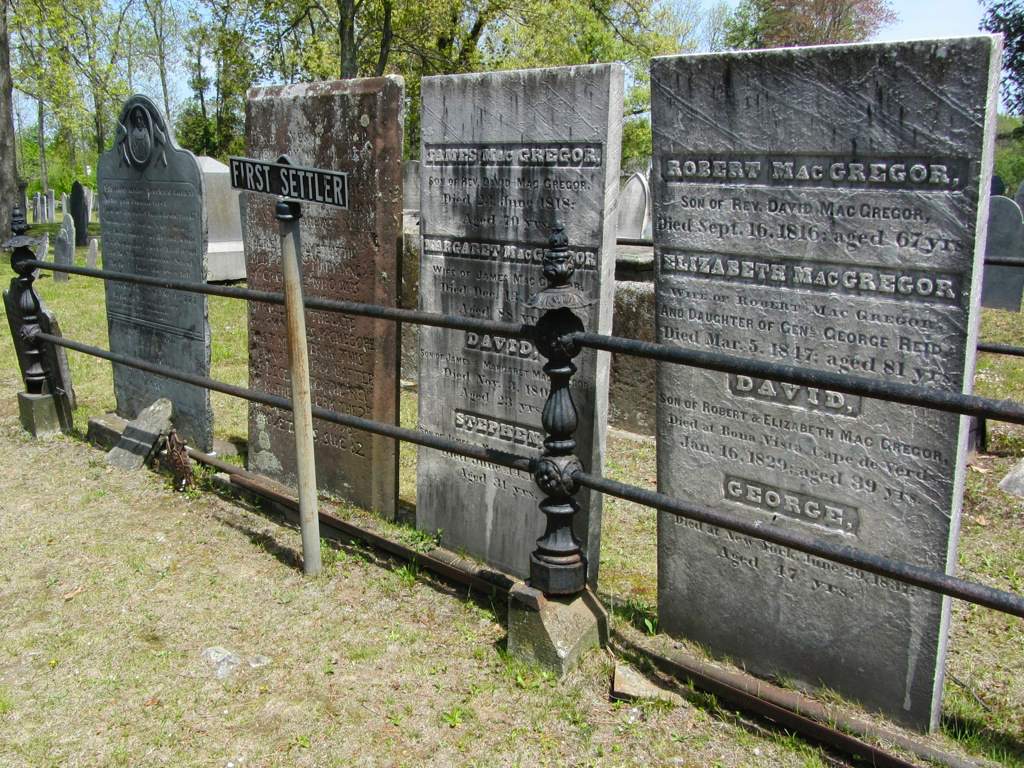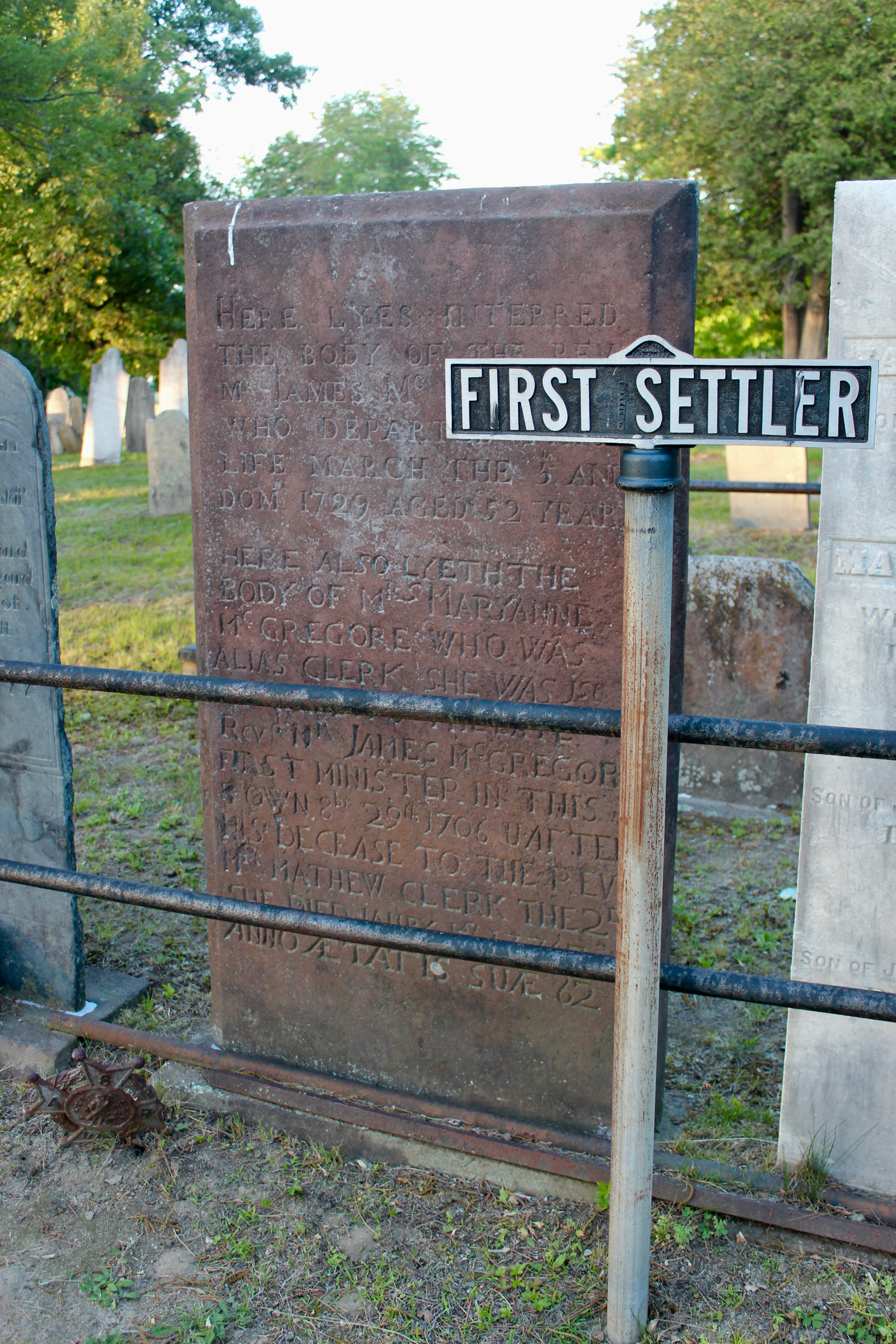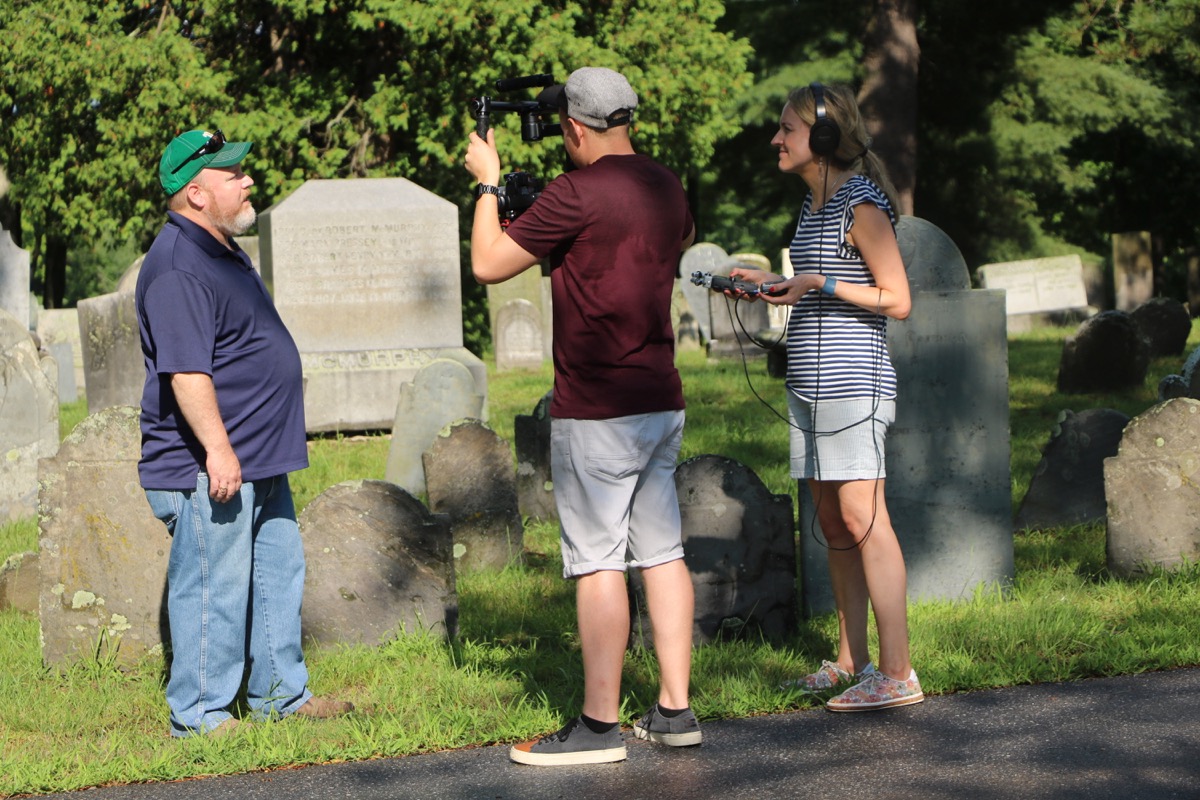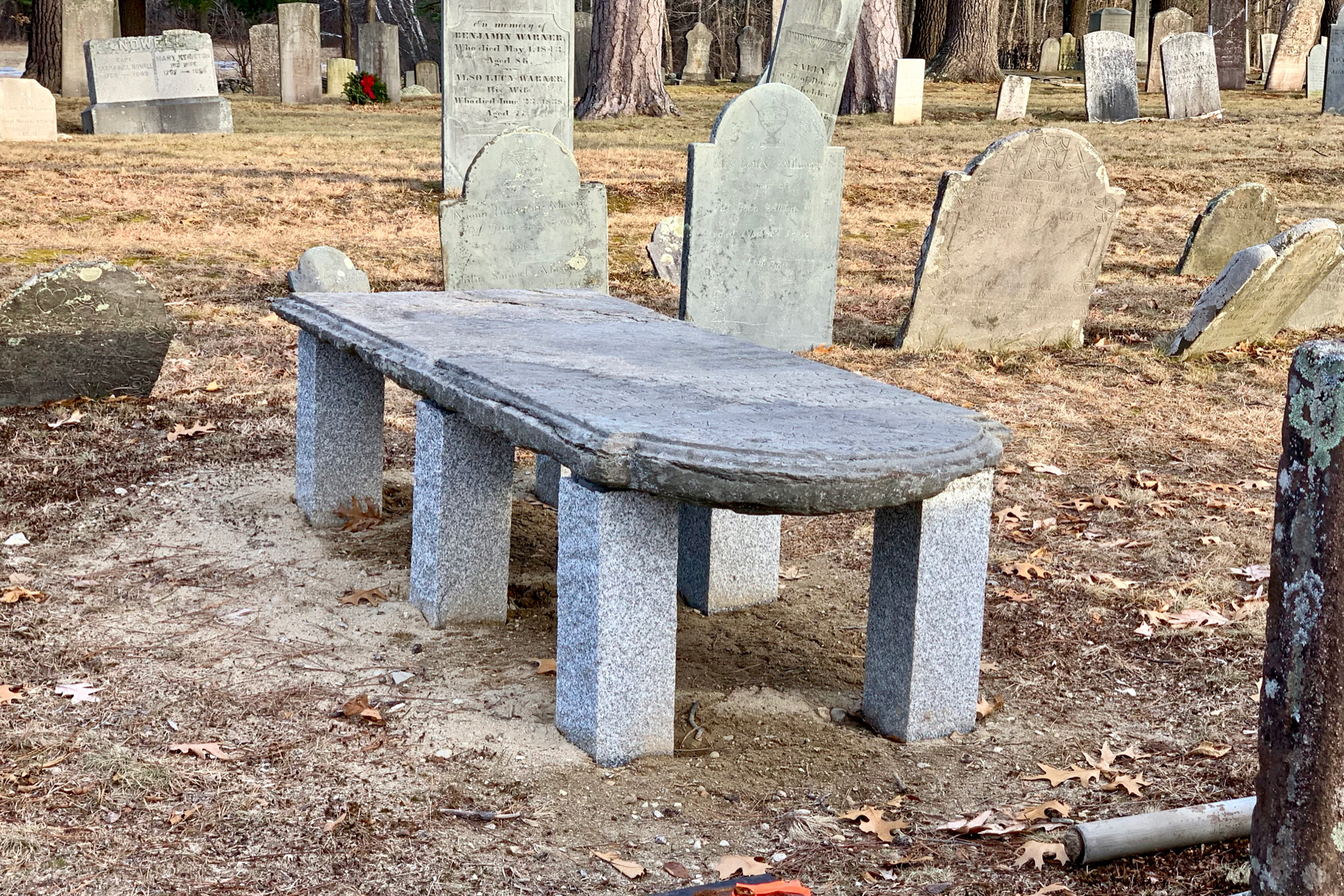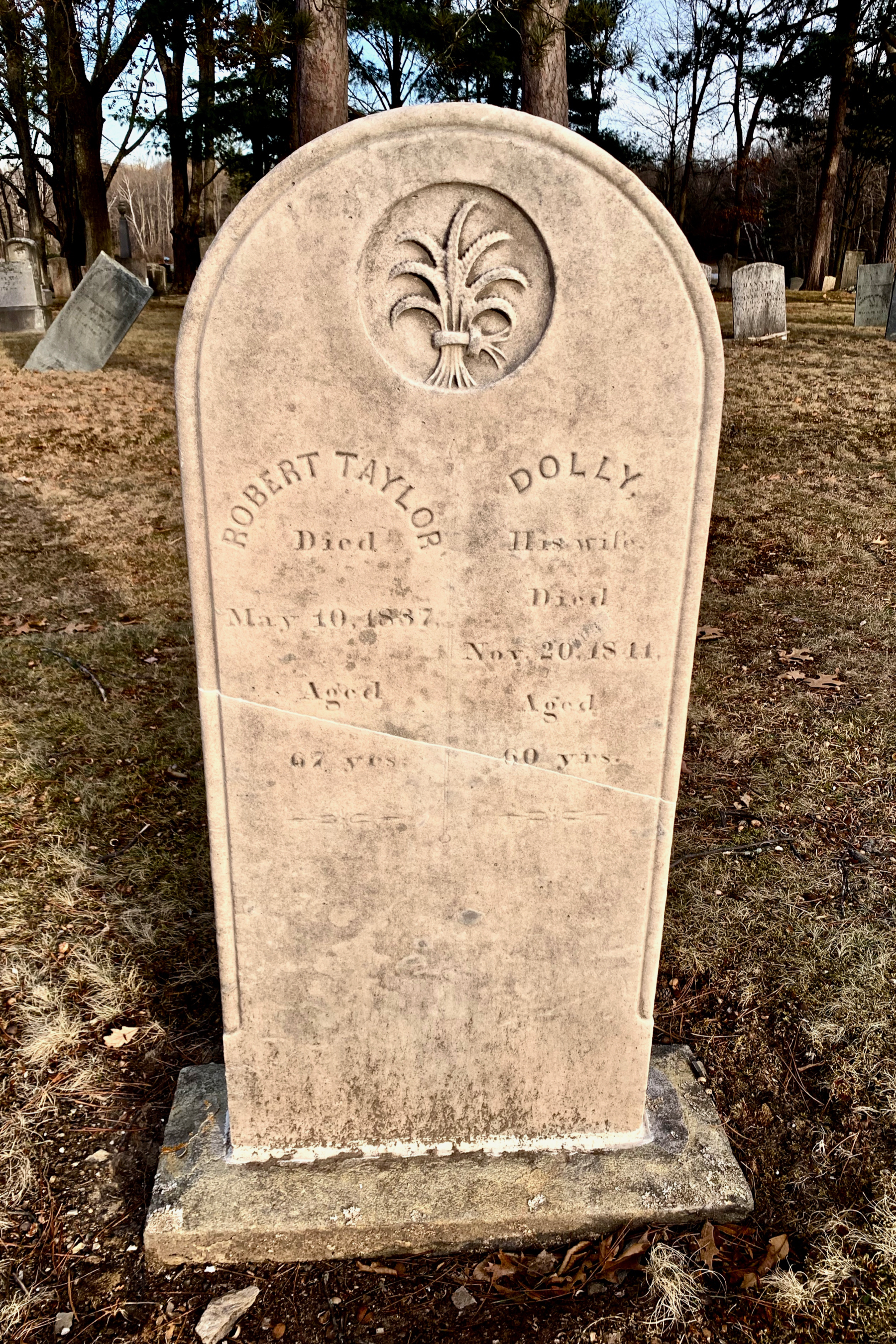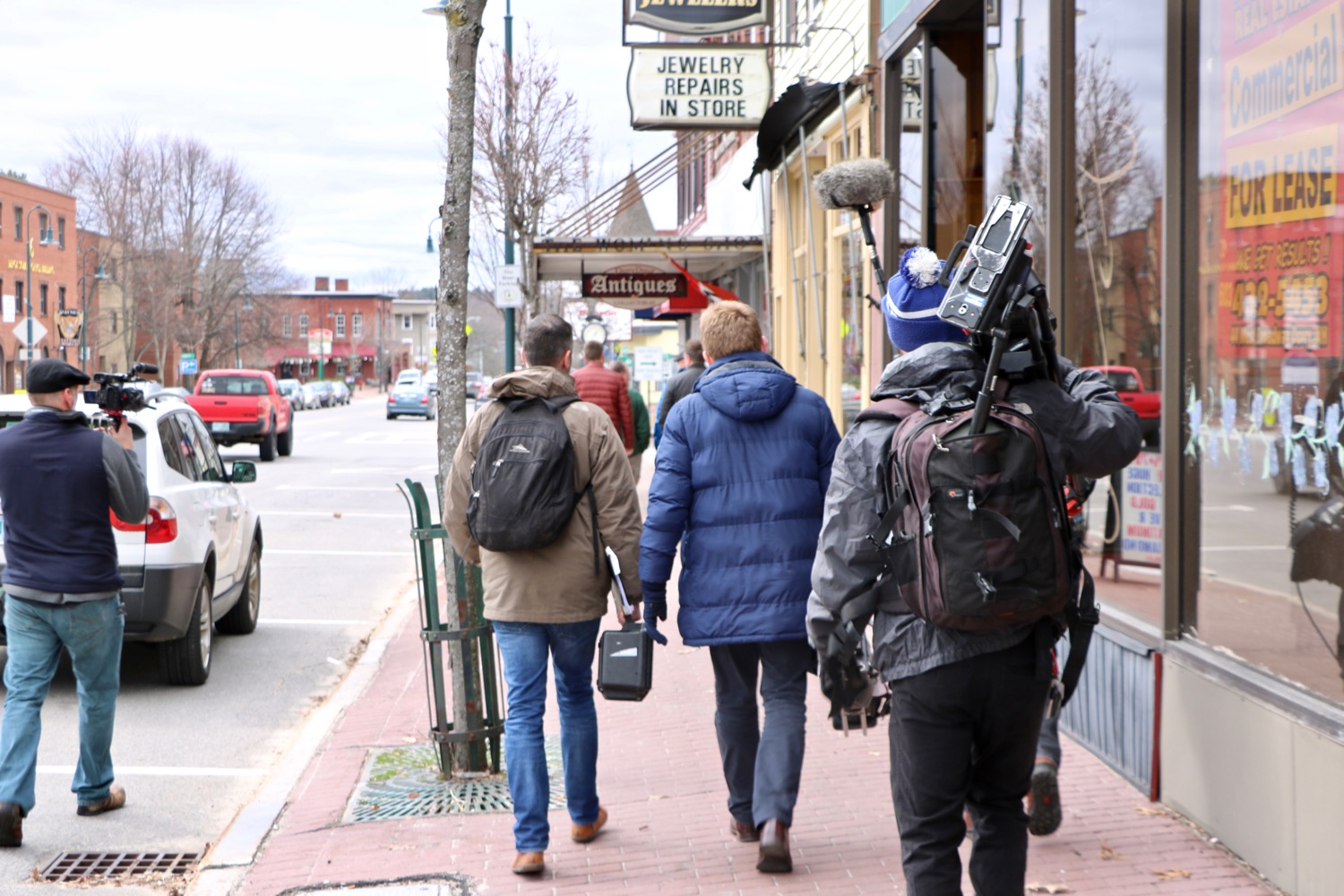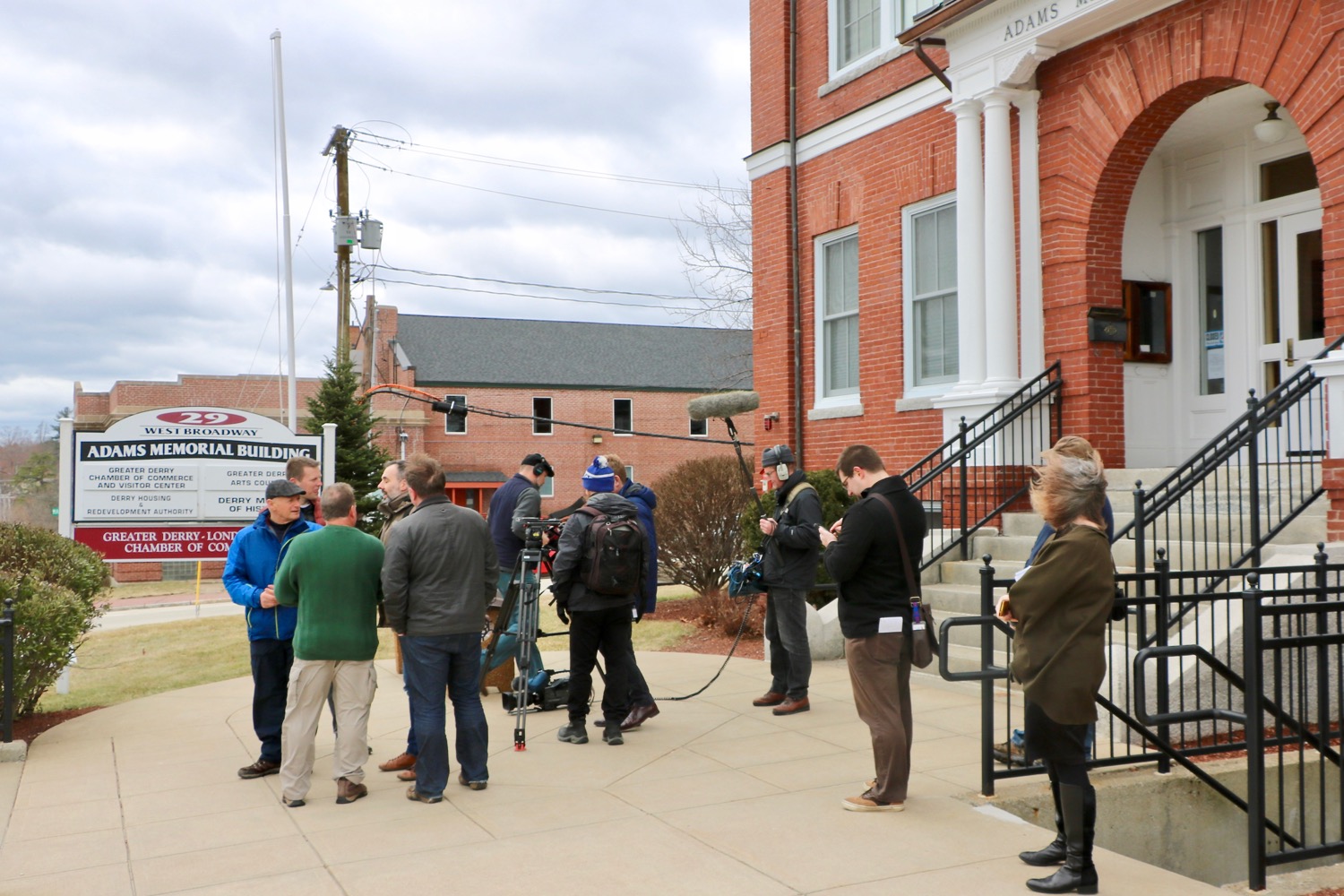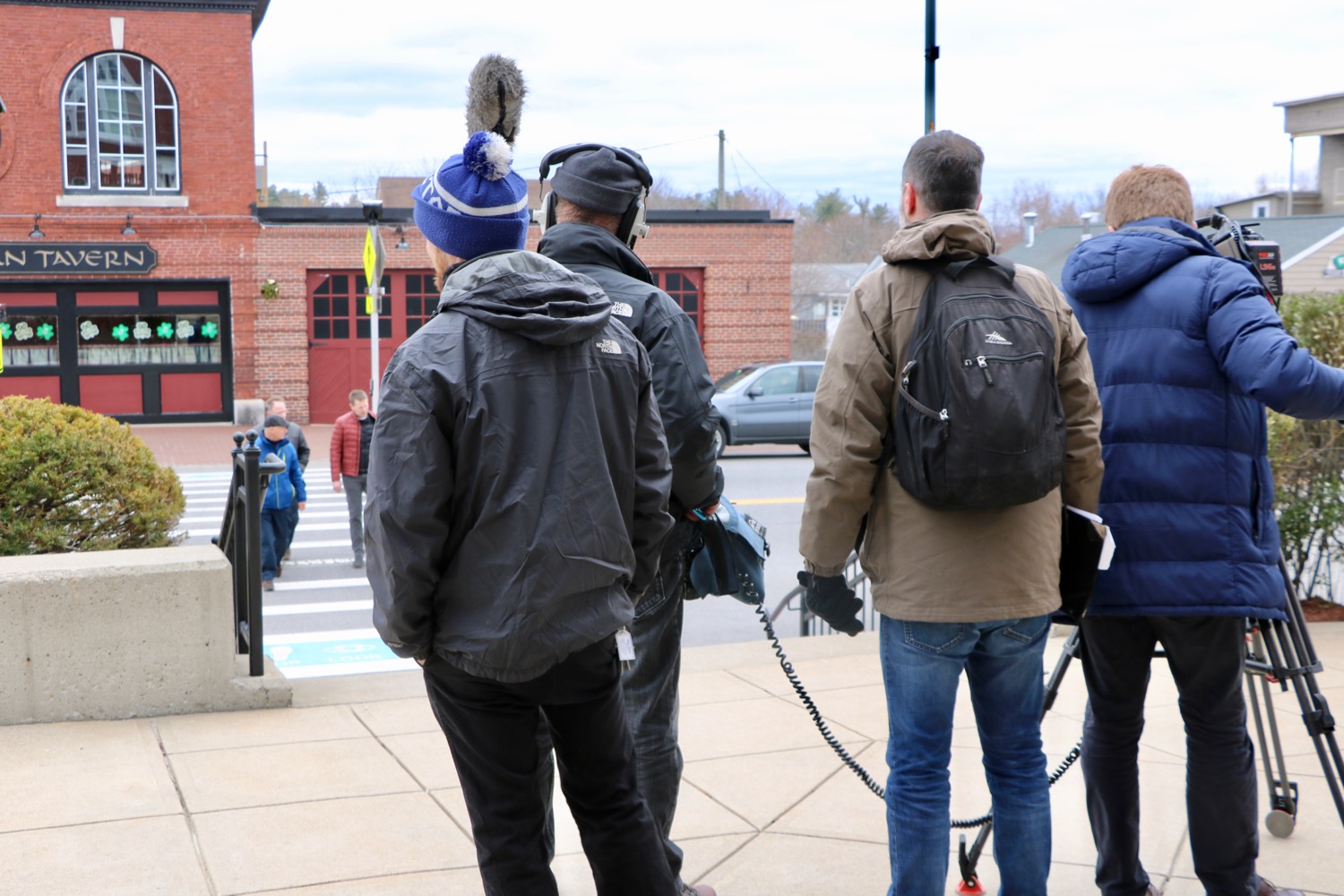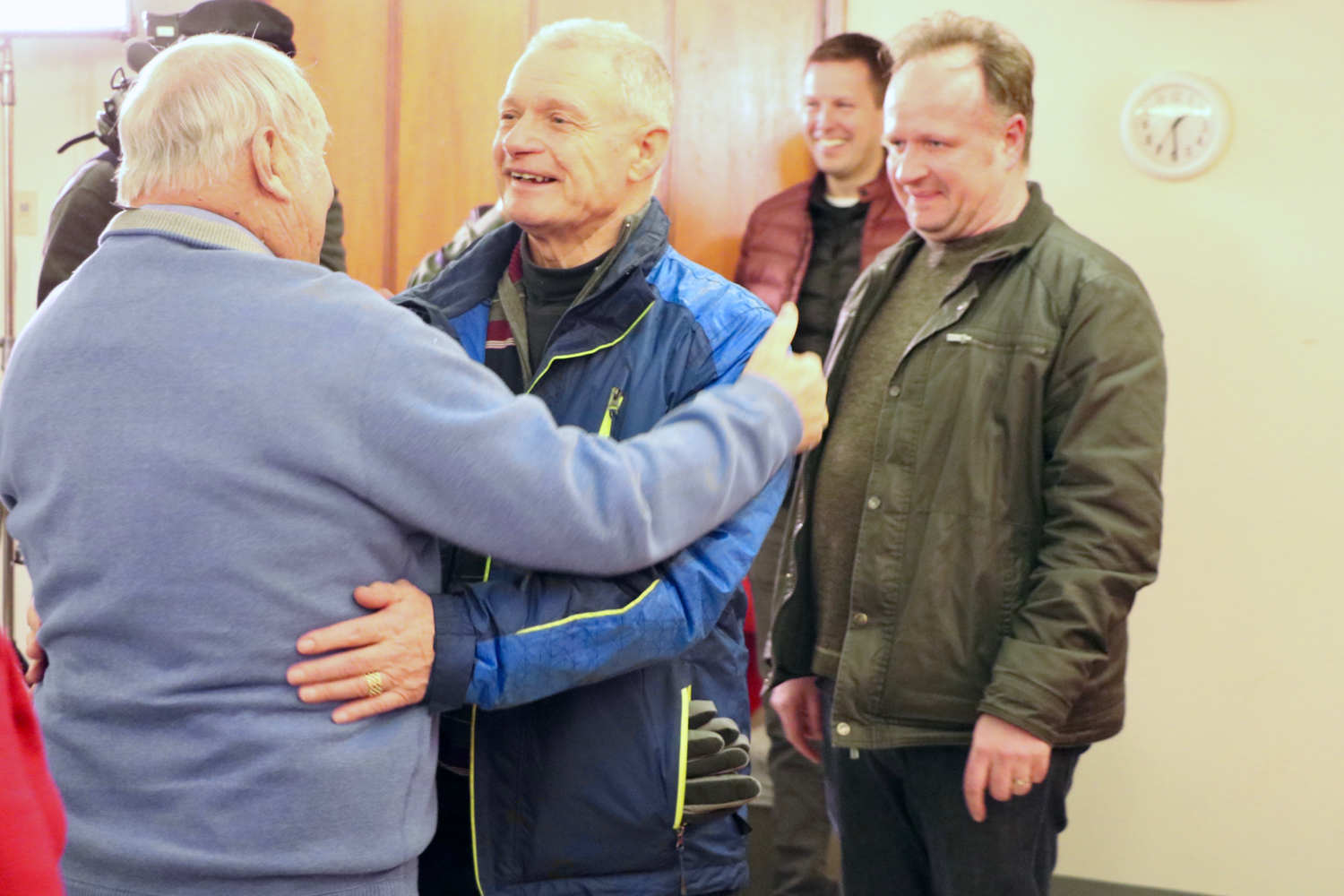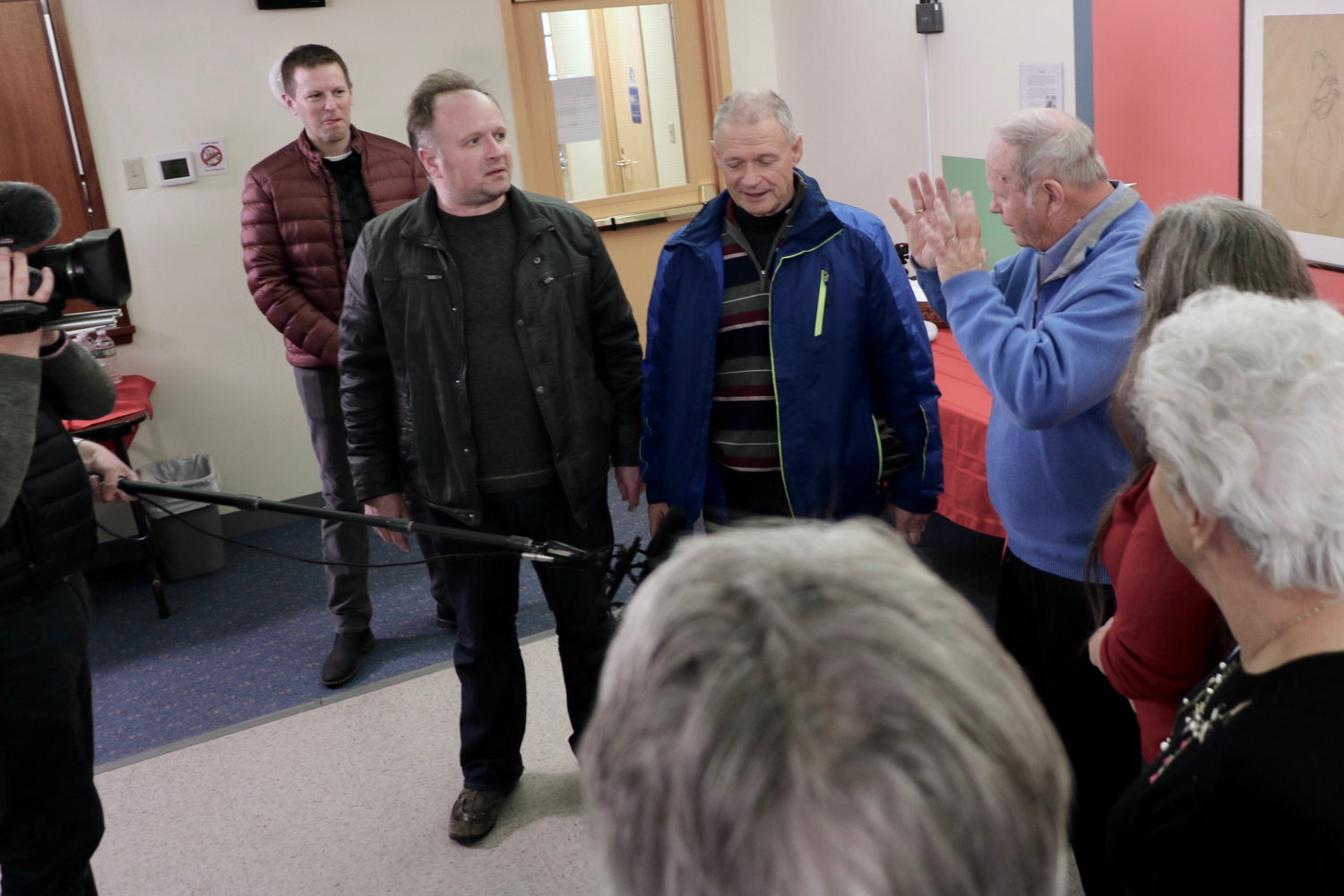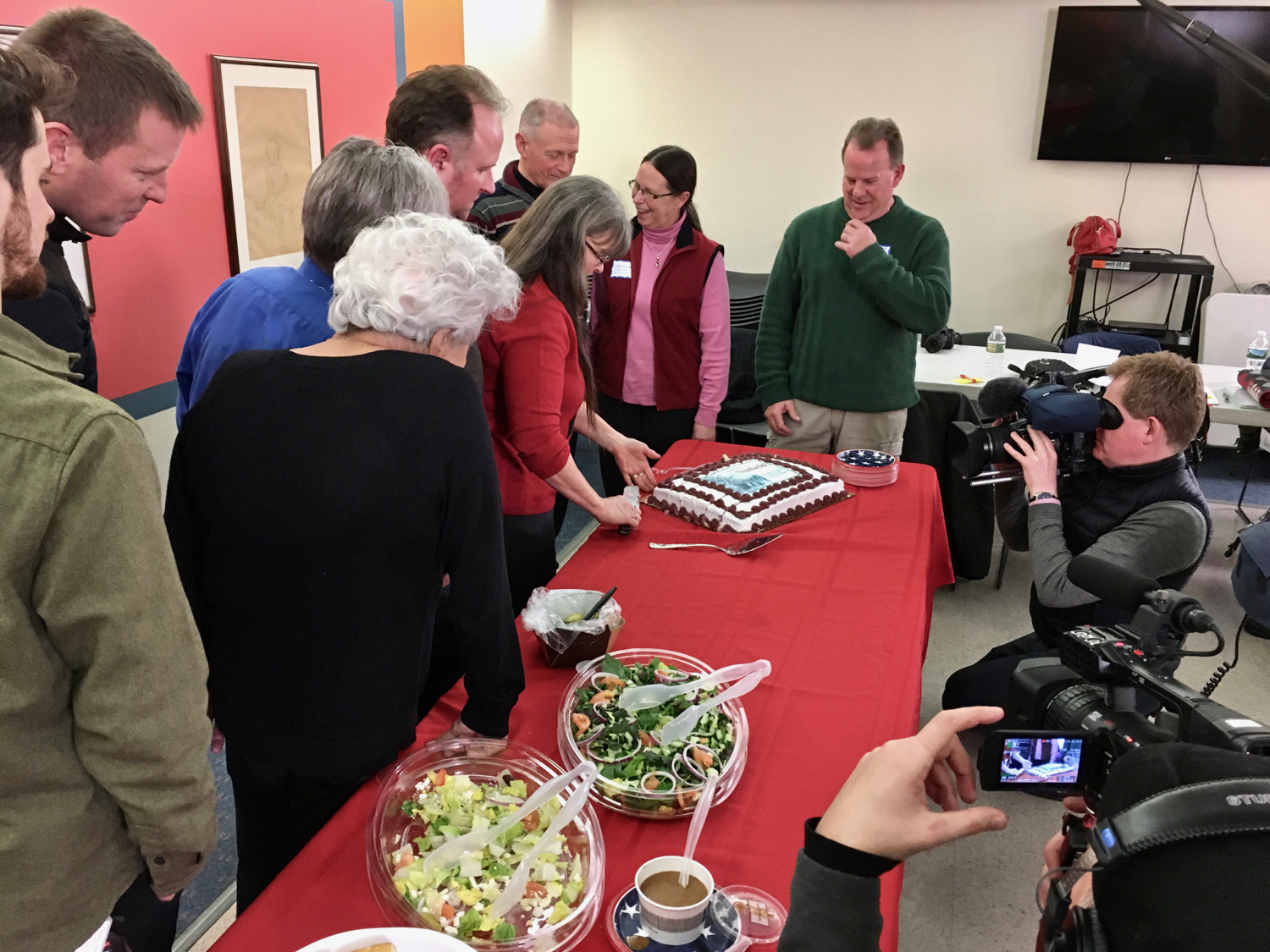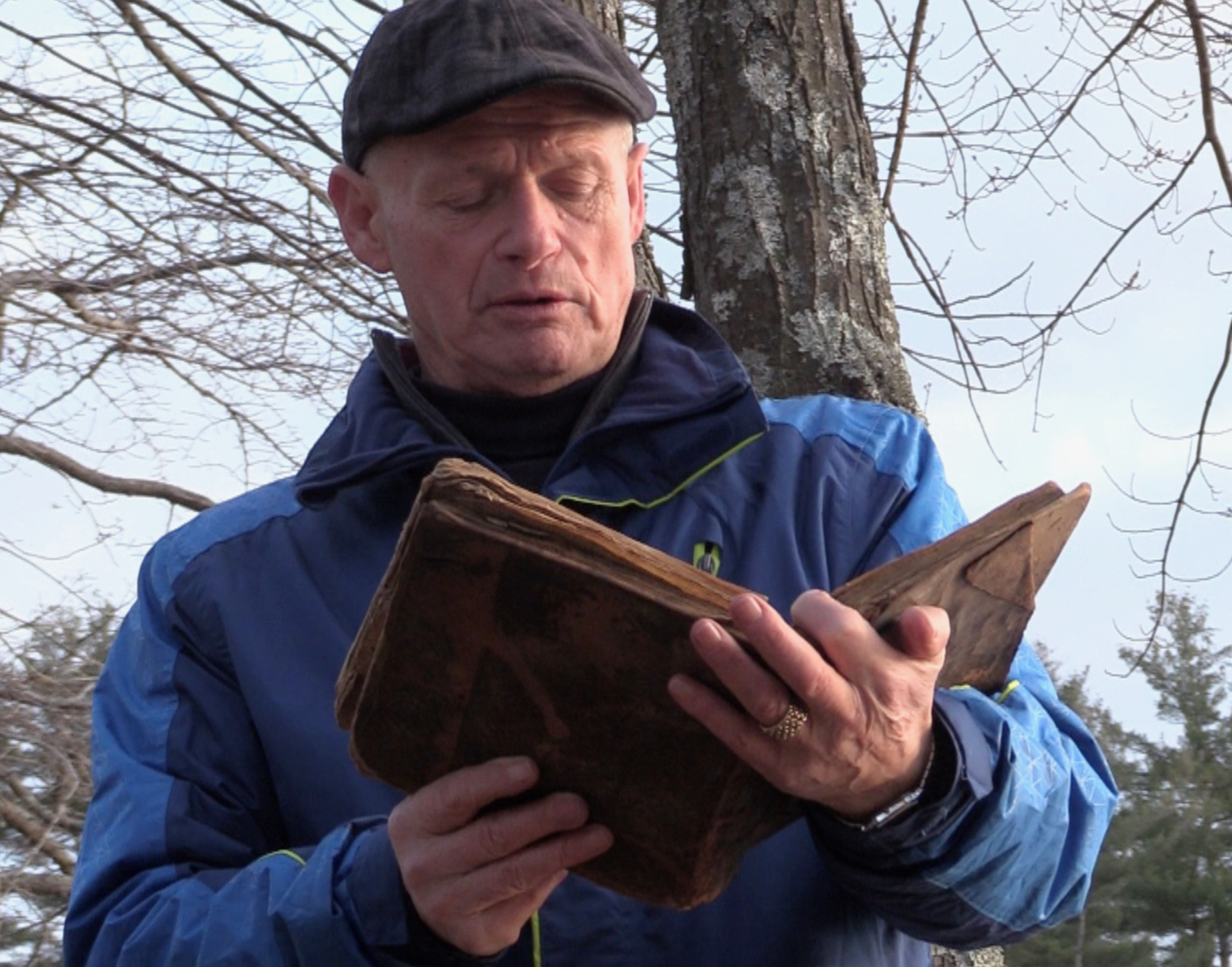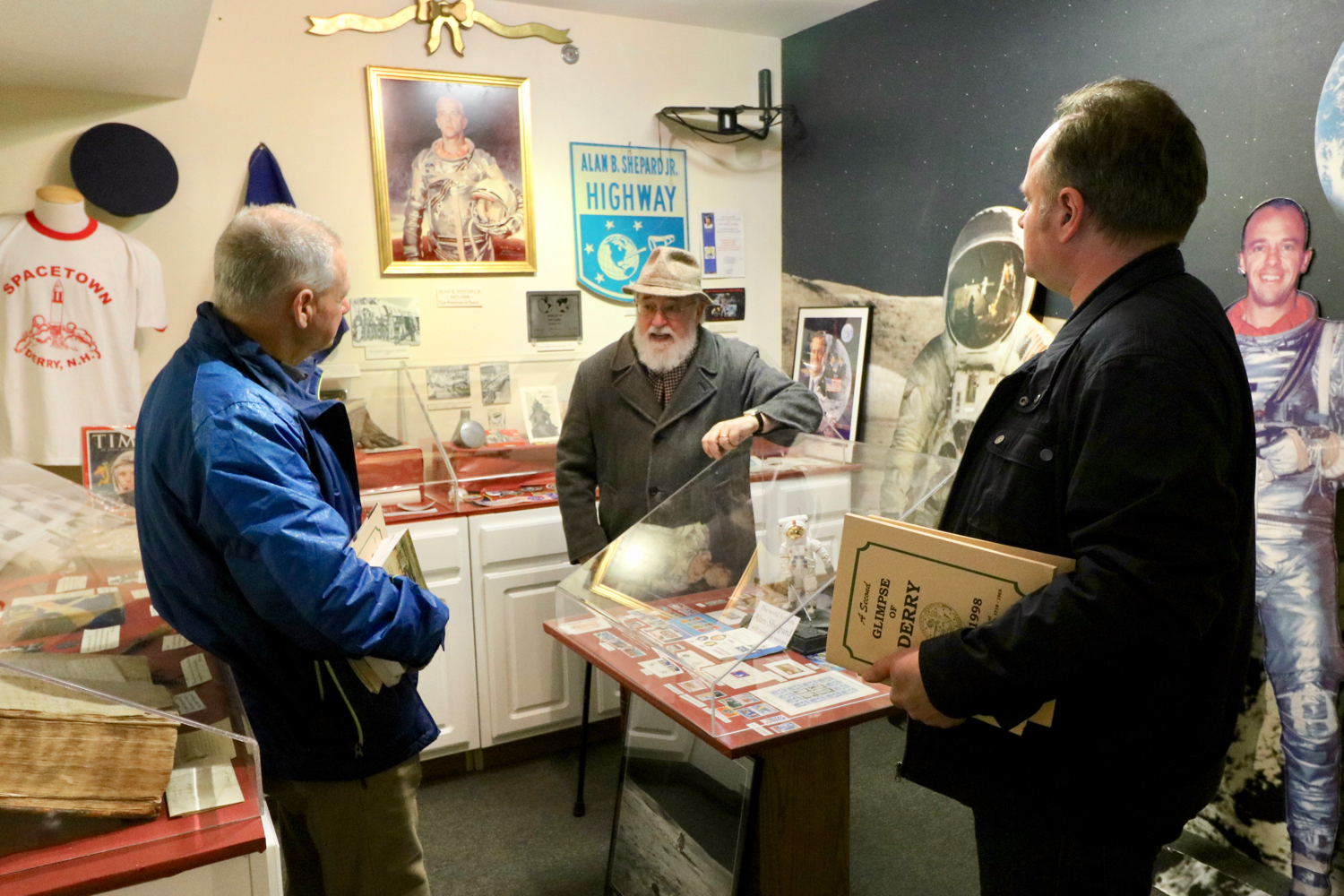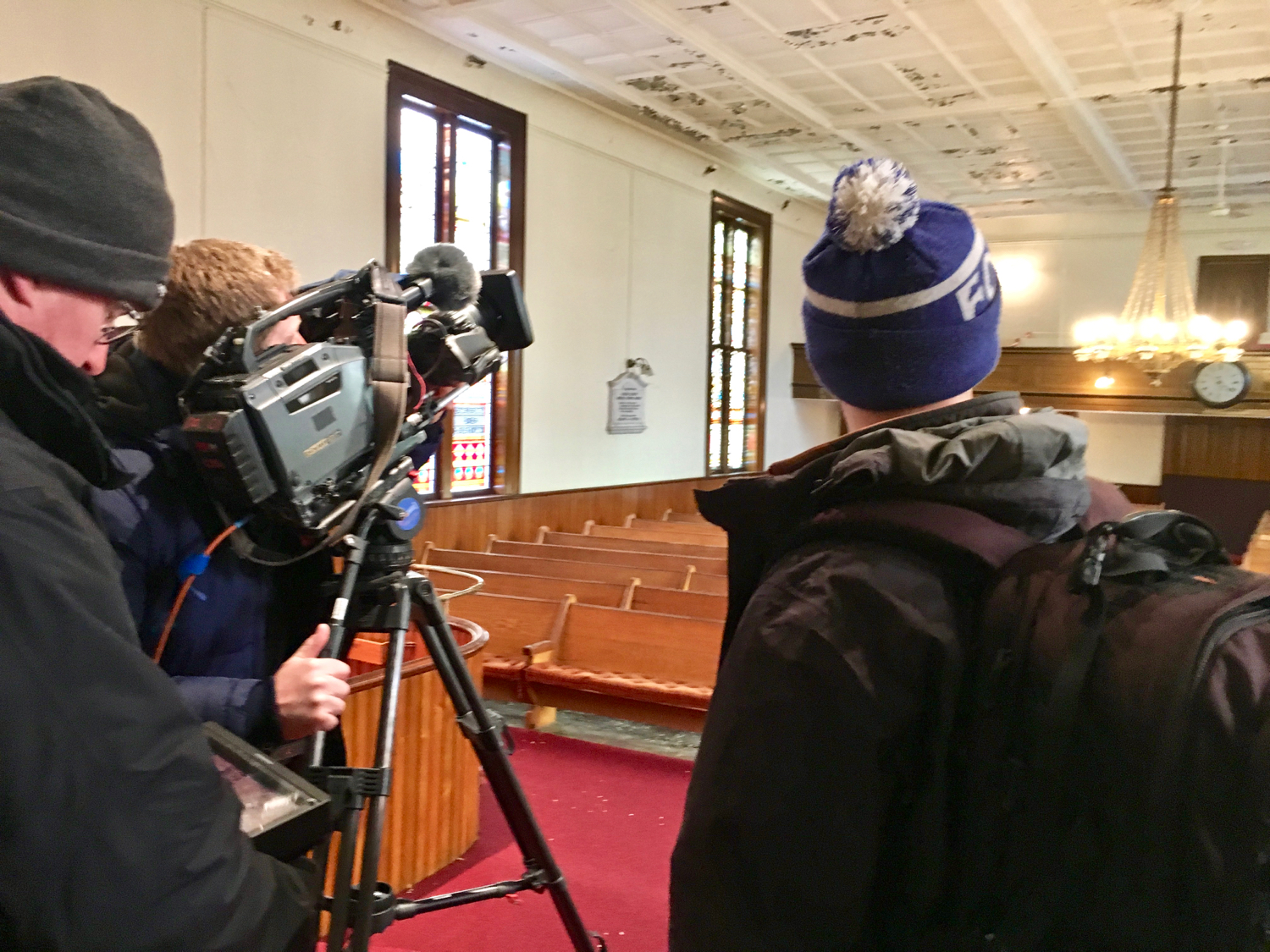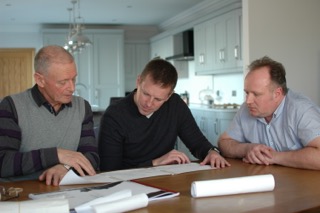
NUTFIELD HISTORY BLOG
Articles, news, and more
Telling the Nutfield Story: Ulster-Scots Videos
Videos on the 1718 MIgration from Northern Ireland and the settlements of Nutfield in New Hampshire and near Portland in Maine.
The Nutfield 300th anniversary celebration isn’t just important to our towns of Londonderry, Derry, Windham and Derryfield, but also to those “back home” in Northern Ireland. Accordingly, this past August the Northern-Ireland based Ulster-Scots Agency invested considerable resources in sending a professional film crew over to capture scenes and interviews from old Nutfield and the similar early settlements in Maine (see blog post to the right).
The resulting video productions are available to watch below. These include:
an introduction to the project by Richard Hanna, Director of Education and Language for the Ulster-Scots Agency, Belfast, Northern Ireland,
a short piece focused on Rev. MacGregor’s establishment of Londonderry and Derry,
a broader look at the 1718 MIgration and journey of the Scots-Irish from Ulster to Nutfield and Maine, and
a comparison of the parallels—and differences–between Belfast Maine and Belfast Northern Ireland.
FIrst up is the brief introduction by RIchard Hanna.
This first video from the Nutfield and Northern Ireland collaboration starts with Rev. James MacGregor’s journey and ends showing the interior of a meetinghouse still very much like the original version of that at Rev. Macgregor’s First Parish in East Derry.
This next video covers the 1718 journey of Rev. MacGregor’s company from his home parish in Aghadowey Northern Ireland to New England, and their settlements in Nutfield and in Maine. It includes a sentiment expressed by our local TJ Cullinane on the challenges of the early settlers that applies well to our goals for the whole 300th celebration:
“[If} people today, so preoccupied with their own troubles, … would only look back into their own history, they’d see that what they’re contending with today pales in comparison with the trials and tribulations of the First Settlers. ”
This final video in the series focuses on Belfast Maine—founded by members of Rev. MacGregor’s contingent who journeyed north of New Hamshire and ended up staying—and its parallels with Belfast Northern Ireland.
We hope these videos have provided a bit of historical info and enthusiasm for the upcoming Nutfield 300th celebrations here in Derry, Londonderry, Windham, and the Derryfield portion of Manchester. Visit the Nutfield 300th Page to learn more, and follow the Nutfield 300th on Facebook for updates.
Forest Hill Cemetery — Early Settlers Plot Refurbishments
Refurbishments in Forest Hill Cemetery for the Nutfield 300th focus on the historic plots in the Early Settlers area.
One Nutfield 300th project the Derry Heritage Commission has underway is the refurbishment of the early settlers plots in Forest Hill Cemetery.
This row of headstones includes Rev. James MacGregor—the “Moses of the Scotch-Irish” and founder of Nutfield who was buried in 1729—and his wife and sons and their wives. For perhaps a century it was surrounded by an iron fence, and in recent years sported a street sign identifying the “First Settler.”
The iron rods in the fence obscured the stones, and the handsome iron posts at the corners and midpoints of the fence needed refreshing. Local historian and Forest Hill Cemetery authority TJ Cullinane has been working with monument experts Cornerstone Cemetery Services LLC to develop a new, refined design to mark and protect these treasured headstones.
The new design will reuse the iron posts, first stripping, repairing and repainting them to restore their original appearance. The iron rods will be replaced with chains, which can be moved out of the way for occasional photography or videography. A new, distinguished granite post already in place identifies the plots as those of the “Early Settlers.”
From TJ Cullinane:
”It’s heartening to see the support from the town and its residents for improving the First Settlers lot in honor of the Nutfield 300th observance. Equally gratifying is knowing that this support extends to our ancestral homes overseas, as this sacred spot continues to be a magnet for historians and documentary producers from throughout the North of Ireland and Scotland.”
Filming in Forest Hill for a BBC documentary (June 2012), by Waddell Media for a
BBC show on MacGregor’s descendants (March 2018),
and MacMillan Media for the Ulster Scots Agency (August 2018).
The work also includes refurbishing nearby historic gravesites, whose dilapidated condition detracted from the overall appearance of this historically significant area. Two have been completed already:
A table stone memorializing Thomas and Martha Steel
-An upright marker commemorating Robert and Dolly Taylor
Cullinane further commented:
“Here in Derry, we hold ourselves to the high standard set by the legendary British Prime Minister William Gladstone who wrote, ‘Show me the manner in which a nation cares for its dead and I will measure with mathematical exactness the tender mercies of its people, their respect for the laws of the land, and their loyalty to high ideals.’ I strongly feel that we are meeting Gladstone's standard and perhaps exceeding it."
All the work should be completed in time for Founders Weekend (April 12–14, 2019), when the Early Settlers plot and the rest of the historic Forest Hill Cemetery will be featured in tours and talks.
BBC Film Team Follows Rev. James MacGregor to Old Nutfield
A film crew producing the Family Matters TV show for BBC Northern Ireland visited Derry NH with descendants of the 1719 founder of Nutfield The Rev. James MacGregor.
Leaving Dublin just before a rare snowstorm shut the city down, a team from [Waddell Media] in Belfast arrived in Boston recently for a four-day filming adventure.
Waddell Media’s MacGregor Party
Alan and Ainsley Laughlin, descendants of Rev. MacGregor’s brother Andrew.
Colin Brooks, American genealogist and contributor to the 1718 Migration Project.
For Waddell Media:
Richard Weller (director),
Gavin Andrews (presenter),
Paul Littler (camera),
Mark McMaster (sound),
Stephen Matter (camera assist),
and from home in Northern Ireland:Sharon Whittaker (production coordinator).
Their purpose was to shoot footage for a BBC Northern Ireland “discovering genealogy” type television show called Family Footsteps. They came with two descendants of The Rev. James MacGregor, who in 1719 led 16 Scots-Irish families from Ulster to eventually settle in Nutfield, today’s towns of Derry, Londonderry, Windham, and the Derryfield part of Manchester, New Hampshire.
On Friday March 2nd, 2018, the team traveled to Casco Bay in Maine for a firsthand experience of the tough winter conditions part of Rev. MacGregor’s party endured as their ship was stuck frozen in the bay for the winter of 1718–1719.
On Sunday March 4th, they traveled to The Fort at Number 4 on the Connecticut River in Charlestown, New Hampshire, to get a taste of the First Settlers’ daily life in a recreated colonial village and open-air museum.
Saturday March 3rd and Monday March 5th they spent mostly in Derry. Their visit was coordinated by folks from the Derry Heritage Commission, the First Parish Church Historic Preservation Committee and Building Advisory Committee, Nutfield Geneology, and the Friends of the Meetinghouse at First Parish. Some Derry scenes and details follow.
Saturday: a Walk Down Broadway
In addition to visiting historic and MacGregor-related sites, the producers wanted to capture a sense of MacGregor’s town as it is today.
They arrived about 11:00 am at the Derry Public Library, site of the later MacGregor reunion luncheon.
While the crew set up lighting and equipment in the lower level function room, their historian for this trip Colin Brooks talked with descendants Alan and Ainsley Laughlin upstairs in the New Hampshire Room. This special research room is filled with historic resources and features a stained glass window with the MacGregor family coat of arms.
The team then walked west on Broadway from the library to the Derry Museum of History in the Adams Memorial Building, stopping at corners and intersections to film and accompanied by reporters and photographers from local newspapers and a videographer from Derry Community Cable. After an extended discussion filmed on the lawn and a quick visit in the History Museum, everyone rushed by car back to the Library.
MacGregor Reunion at the Derry Public Library
While Alan, Ainsley, and Colin returned to the New Hampshire Room, the final preparations for the surprise reunion luncheon were made in the library’s great function room downstairs.
While the crew was filming downtown, several descendants of Rev. MacGregor and other founding families plus town dignitaries, First Parish's pastor, and others had made their way to the room. Once the lunch buffet, cake, and film crew were ready, the Laughlins were brought in to a cheery yelling of “Surprise!”
Alan and Ainsley were quite moved by the gathering, and the chance to meet relatives they had not previously known about. The festivities even included a FaceTime session back home to Northern Ireland so Ainsley’s life and children could participate.
First Settlers’ Graves in Forest Hill Cemetery
After the wonderful reunion lunch, the crew raced up to Forest Hill Cemetery in East Derry, very conscious of the cloudy conditions and risk of loosing the light for the remaining outdoor filming. They arrived about 3:30 pm.
Our local expert TJ Cullinane—head of the Friends of the Forest Hill Cemetery and a Heritage Commission associate—was waiting to host the crew’s visit to the final resting place of Rev. MacGregor and most of the founding families. (The First Settlers plot area is scheduled to get a sprucing up and be a highlight site for the 2019 Nutfield 300th Anniversary Celebrations.)
The First Sermon Site on Beaver Lake
After considerable filming in the cemetery, the crew moved on to the site of the First Sermon on the shore of Beaver Lake, getting there only a bit late at about 4:30 pm.
We are grateful to the property owner and residents for allowing access to this private location on the northeast shore of the Lake. This was the site where Rev. MacGregor first gathered the initial settlers for an encouraging sermon as their work to establish a life at Nutfield was about to begin. We consider its date, April 12, 1719, to be the founding date for Nutfield.
The film crew captured Colin talking about the settler's arrival and telling stories about Rev. MacGregor. Then Alan read from an historic bible the very passage Rev. MacGregor used in his sermon:
And a man shall be as a hiding place from the wind, and a covert from the tempest; as rivers of water in a dry place, as the shadow of a great rock in a weary land. — Isaiah 32:2
After capturing some beautiful, contemplative scenes as the sun lowered on the lake, the crew packed up and concluded a long but successful day.
Bonus Monday: Museum and the Meetinghouse
With the snow cleared in Dublin and a 6:30 pm Logan Airport flight home, the crew made time Monday morning March 5th to do more filming in Derry.
Alan and Ainsley returned to the Derry Museum of History. There Museum Curator Mark Mastromarino and retired Derry Town Historian Rick Holmes entertained them with a tour and many historic stories. (RIck had been out of town on film day Saturday.)
The film crew meanwhile visited the Meetinghouse at First Parish.
Though built in 1769—fifty years after MacGregor’s early death—the Meetinghouse was the civic and religious home to the wildly successful community he helped establish. Today it continues as it was then as the functional and symbolic heart of the village. A massive historic preservation project is currently underway to make sure the Meetinghouse continues to serve the community for at least another century or two. (Your donation or other support can help make this happen!)
Goodbyes and Plans
Our Northern Ireland visitors concluded their successful trip with some final shooting and a late lunch downtown before heading to the airport in Boston.
Everyone involved in hosting was moved by meeting the Alan and Ainsley, and the weekend was an encouraging boost to our plans for the Nutfield 300th Celebration in 2019. In fact, hearing of those summer-long plans, the Laughlins—and the Wadell Media team—will try to come back and participate in the big kick off at First Parish and downtown on April 12, 2019.
BBC Northern Ireland is likely to air the MacGregor TV show in 4–6 months. We'll let you know if it can be viewed from here, or otherwise try to get a copy to show locally. Meanwhile, Derry Community TV will use the extensive footage they shot in an upcoming show on the Nutfield 300th, and you can read local coverage of the filming weekend here:
DERRY NEWS
Family ties — Irish film crew helps father, son trace local roots
MANCHESTER UNION LEADER
Northern Ireland film crew visits Derry with MacGregor descendants
NUTFIELD NEWS
BBC Visits Derry With MacGregor Ancestors to Film Mini-Series
photo
NUTFIELD GENEALOGY BLOG
Mini MacGregor Reunion in Derry, New Hampshire filmed by the BBC
The 1719 Nutfield Story from an 1878 New Hampshire Newspaper
BBC Filming Rev. MacGregor's Story
A BBC film crew is covering a Rev. MacGregor family reunion and historic Nutfield sites on Saturday, March 3, 2018.
Rev. James MacGregor—“the Moses of the Scotch-Irish in America” —led the first of thousands of Scots who migrated from Northern Ireland to North America in the 1700s. Now some of his descendants are retracing Rev. MacGregor’s journey, in the company of a film crew making a documentary for the BBC.
This Saturday (March 3, 2018) they’ll be in Derry and East Derry, New Hampshire, the heart of the old Nutfield territory that Rev. MacGregor and the sixteen First Settler families made home.
Discovering A Famous Ancestor
Waddell Media, Ireland’s largest factual independent production company, is filming for the BBC Northern Ireland’s Family Footsteps series on living history and genealogy.
Rev. MacGregor descendent Alan Laughlin and son Ainsley with BBC presenter Gavin Andrews (center) study their long family tree.
They have already filmed retired Northern Ireland teacher Alan Laughlin taking a journey of discovery through his family tree, revealing how and where his Ulster-Scots ancestors lived during the 19th and 20th century, and ultimately revealing an ancestral link to Rev. MacGregor.
Alan’s son Ainsley is also part of the story. He, his wife Kerry, and their three daughters recently experienced the daily life of their ancestors at the Ulster Folk Park in Cultra, county Down. As described by Waddell production coordinator Sharon Whittaker, “Ainsley swapped software development for manual labour, Kerry the microwave for the open fire, and the girls got a taste of rural education in the 1800s.”
Now as this post is published, Alan and son Ainsley are traveling to New England with well-known BBC Northern Ireland presenter Gavin Andrews and a sizable film crew.
A recent depiction of Rev. MacGregor by Derry-area artist Rosalind Giuffrida Hartley.
Here the Laughlins will learn more about the legacy of of an ancestor whom prior to last week they didn’t even know they had. They will visit the port where MacGregor and his flock first landed, trace the settlers' path through New England, explore remnants of early settler life, and stop in Derry to see the legacy of the Nutfield settlement MacGregor helped establish and meet other MacGregor descendants.
Derry Locations
The filming will take place this Saturday, March 3rd, for most of the day. Area relative Colin Brooks will join Alan and Ainsley on the adventure. The film crew hopes to record key historic sites, and also to capture the look and feel of MacGregor’s town as it is today.
MacGregor family coat of arms window in the Derry Public Library (photo courtesy DPL).
The highlight is a surprise event for Alan and Ainsley: a 12:30 pm family reunion and luncheon reception for MacGregor descendants at the Derry Public Library. (Though not open to the public, the team is seeking additional MacGregor descendants to attend and meet Alan, Ainsley, and Colin. Please email if you’re interested. See also this story at Nutfield Geneology.)
The Derry Museum of History is downstairs in the Adams Memorial Building in downtown Derry, at 29 W. Broadway.
Earlier (about 11:00 am), the crew will arrive in Derry and be welcomed at the Adams Memorial Building by the Derry Heritage Commission. After a tour of the Derry Museum of History and its collection of MacGregor and Nutfield displays, the group will take a filming walk along Broadway to the Derry Public Library. They’ll shoot outside scenes of the library—which was first built thanks to the generosity of a MacGregor descendent—and the adjacent MacGregor Park, then join the reunion inside.
MacGregor memorial plaque at the Derry Public Library.
First Parish Church with its Meetinghouse anchoring the Upper Village, a National Register of Historic Sites location.
After, the crew will drive up the hill to the historic Upper Village in East Derry. About 3:00 pm the First Parish Historic Preservation Committee will give a tour of the 1769 Meetinghouse at First Parish Church, which is currently undergoing a massive historic preservation project. The Friends of the Forest Hill Cemetery will then host the crew’s visit to the First Settlers plots in the adjacent graveyard. (The public is welcome to observe at both sites.)
The First Settlers plot in Forest Hill Cemetery.
The day will then wrap with filming on Beaver Lake, near the site where MacGregor preached the First Sermon on April 12, 1719, marking the founding of Nutfield.
Depiction of the First Sermon on April 12, 1719, under an oak tree on the shore of Beaver Lake (from Willey's Book of Nutfield).
As our local preparations for the Nutfield 300th Anniversary Celebration ramp up, it’s exciting to see how important the story of Rev. MacGregor and Nutfield are to their descendants in Northern Ireland, and to participate by hosting this BBC filming. We will share news of the production and TV show as it develops.
Why the First Settlers Came to Nutfield
Early movements of the First Settlers, from Ireland to Boston, Maine, and Nutfield
It’s almost sunset on a hot July 28th, 1688, and a twelve-year-old boy is climbing stairs to the highest point in the walled city of Derry, Ireland.
He’s no doubt thinking of the several thousand soldiers and residents who recently died within those walls, on this the 105th day of a terrible siege. Rations are scarce—there are few dogs left alive in the city—and only two days worth remain.
Nearing the top, the boy can hear cannon and musket fire from a couple of miles down the calm river Foyle. Emerging at the top of the cathedral tower, he can just see the great battle going on downstream. There, a wooden and chain boom stretches shore to shore, blocking the relief ships sent by King William and Queen Mary, Protestant rulers in England.
The boom was built and defended by the French and Irish army of deposed Catholic King James II. He had promoted Catholicism and threatened the Protestant establishment during his brief reign, and had been banished to France. His attempt to regain the throne centered on taking over Northern Ireland, and until now his forces had been quite successful.
The boy on the tower and his family and many other faithful Presbyterian Protestants had fled to the safe walls of Dublin to escape the Catholic army sweeping the Irish countryside. Soon he sees the answer to their prayers, as the British ships break through the boom and sail towards the city. With great joy and excitement he fires a signal cannon to let the famished residents know that relief is on its way. Two days later and the Catholics give up, abandon the siege—and the war—and a defeated King James heads back to France.
That twelve-year-old boy was James MacGregor, who would go on to found what became Derry and our First Parish Church.
The Scots-Irish migrated from the lowlands in Scotland to the new Ulster Plantation in Northern Ireland.
MacGregor’s immediate ancestors had been among the 100,000-plus Presbyterians moving from the Scottish Lowlands to Northern Ireland between 1607 and 1697. They occupied the farms and towns of the defeated local Irish Catholics, at the invitation of the Anglican Protestant King of England and Scotland.
That king’s motivation in establishing this Ulster Plantation was to use the less-unfriendly Scottish Presbyterians to create a buffer between England and the unruly Irish Catholics. This was a great economic success, but Irish/Protestant tension in Ulster oscillated through the decades, peaking in 1688 with the terrible Siege of Derry we just glimpsed.
War left MacGregor determined to pursue a life devoted to peace. In 1701 he became a pastor in Aghadowey, a small village near Derry, and there lead a decidedly Scottish Presbyterian congregation for many years.
Meanwhile, Ulster became the most economically successful part of Ireland and began to rival England. The concerned British rulers took steps to control the economy and force the state-sanctioned Anglican Protestant religion on all the Presbyterian residents. This made religious and economic life more and more challenging for the Ulster Scots, and lead to yet another migration, this time to the New World.
In the spring of 1718, Rev. MacGregor and sixteen families from his congregation—probably about 300 people—left Belfast on the British ship Robert and sailed to Boston. They were first offered land in Maine along Casco Bay, and the Robert took most of the group north to check it out. They ended up stuck there for the winter, freezing and starving, until an offer of new land finally came. The Robert sailed down to the Merrimack River and landed at Haverhill on April 2nd, and a group of men proceeded North to the flock’s new home, Nutfield.
This was a 12 square mile tract known for its plentiful nut trees and rich potential farm land. The governor in Massachusetts gave them this territory in part to create a buffer between the native Indians and the more civilized establishment in Boston. This sort of attitude would persist for many years, as our resilient band of Scots-Irish settlers continually sought to clarify that they were Presbyterian Scottish immigrants, not the even more scorned Irish Catholics.
Finding Nutfield satisfactory, most of the men returned to Haverhill to fetch their families. Some of the party returned via Dracut to pick up Rev. MacGregor, who hadn’t gone to Maine with the congregation, and instead spent the winter teaching in Dracut. They all arrived there on April 11.
Sketch from Willey's Book of Nutfield (page 52) depicting the First Sermon.
The next day, April 12, 1719, Rev. MacGregor gathered everyone under an oak tree on the east shore of Beaver Lake and preached the First Sermon. This marks the founding of our church.
Nutfield grew vigorously from that point on, becoming a formal town and changing names from “Nutfield” to “Londonderry” in 1722. Much later, in 1827, a religious split led to a departure of many from our congregation to the West Parish, where they kept the town name Londonderry and Derry was incorporated as it is today.
The challenging move of the middle-aged Aghadowy congregation to New England was less “grand adventure” and more “the lesser of two evils.” In a sermon the night before their departure, Rev. MacGregor gave these four reasons for leaving their home:
- “To avoid oppressive and cruel bondage,”
- “to shun persecution and signed ruin,”
- “to withdraw from the communion of idolaters,” and
- “to have an opportunity of worshipping God according to the dictates of conscious and the rules of his inspired Word.”
This vision of religious freedom helped our First Settlers to persevere through very tough times, as had the same spirit helped their ancestors back in Scotland and Ireland.
There is much more to the story of our founding First Settlers. Derry Town Historian Richard Holmes tells the full story in his book Nutfield Rambles. Find it in our local libraries, or read a free excerpt online at Londonderry Hometown Online News.
Read much more about the religious history and background in Scotch And Irish Seeds In American Soil.
Follow the story of the settlement in Nuffield as told in 1890 in Scotch-Irish In New England.








